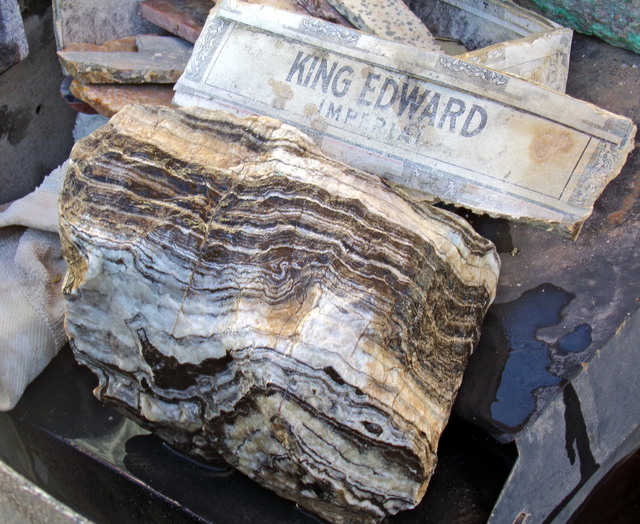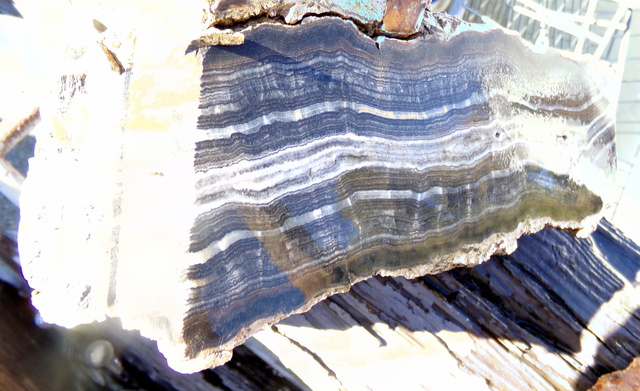|
|
Post by mohs on Feb 3, 2016 21:57:13 GMT -5
pictures or explanations anyone?
|
|
|
|
Post by jakesrocks on Feb 3, 2016 22:30:33 GMT -5
|
|
|
|
Post by Peruano on Feb 4, 2016 7:58:15 GMT -5
My go to site for anything related to quartz, chalcedony or agate is quartzpage.de
The organization of the site speeds me toward the answer or info sought. Tom
|
|
|
|
Post by mohs on Feb 4, 2016 17:50:09 GMT -5
That's a really great page Don!! Answers pretty much the pertinent questions I need to explain sardonyx as birthstone ! If you have any you could send/throw me a chunk  hold the anchovies,, please !!  ha ha what have I started?  |
|
|
|
Post by mohs on Feb 4, 2016 17:54:57 GMT -5
Tom Peruano that quartz page is electro piezo it really rocks! thanks for posting ! Ed |
|
|
|
Post by jakesrocks on Feb 4, 2016 17:56:53 GMT -5
I'll pass on the anchovies Ed. Love sardines in mustard sauce though. Don't think I have any sardonyx, with or without mustard sauce. I'd have to check buckets in my shed after spring thaw.
|
|
|
|
Post by mohs on Feb 4, 2016 18:07:02 GMT -5
I'll remind ya in summer time  as a kid I used to like sardines but something changed got old & finicky mostly |
|
|
|
Post by jakesrocks on Feb 4, 2016 20:08:16 GMT -5
LOL. So did my wife, until I opened one up & showed her that the gutts & bones were still inside. She hasn't touched a can of my sardines since.
|
|
snuffy
Cave Dweller 
Member since May 2009
Posts: 4,319
|
Post by snuffy on Feb 4, 2016 20:10:54 GMT -5
LOL. So did my wife, until I opened one up & showed her that the gutts & bones were still inside. She hasn't touched a can of my sardines since. A woman I know cleans the sardines guts out.Heck that's the best part!! snuffy |
|
|
|
Post by mohs on Feb 4, 2016 22:02:12 GMT -5
Dad use to make Bagna càuda  |
|
Sabre52
Cave Dweller  Me and my gal, Rosie
Me and my gal, Rosie
Member since August 2005
Posts: 20,494
|
Post by Sabre52 on Feb 4, 2016 23:56:31 GMT -5
"Sardonyx" and related definitions from Leland Quicks " The Book of Agates" A lot of differences in these definitions from other writers though.
Chalcedony (agate) with straight parallel bands or layers of reddish-brown to brown alternating with other colors. The name is used incorrectly for carnelian, especially in the jewelry trade.
"Sard Agate" is banded agate similar to sardonyx except the bands are not straight and parallel.
"Sard" is translucent brown to reddish brown chalcedony. The redder varieties would be subclasses of carnelian. the more brown subtypes, sard.
|
|
|
|
Post by mohs on Feb 5, 2016 18:29:22 GMT -5
Thanks guys! Sard doesn’t seem to be a very popular term anymore ‘your just chip off the ol’sard’  I’m sure was once a popular saying ...mostly Here a rock I found by a onyx quarry in Prescott, AZ.  at one time I thought the black was sard here’s another rock that I thought was onyx  but I’m pretty sure it layer travertine precipitated & calcitic from water ADMIN EDIT - repaired broken images, original code below --------------------
[img src="http://img.photobucket.com/albums/v497/stedmo/RTHearts/kingedwardonyx.jpg" style="max-width:100%;"]
[img style="max-width:100%;" src="http://img.photobucket.com/albums/v497/stedmo/RTHearts/travertine.jpg"]
|
|
|
|
Post by mohs on Feb 5, 2016 18:34:07 GMT -5
I think those lakers are the closest thing to sardonyx really make you wonder what the ancient thought sardonyx was ? I mean they knew about agates & onyx why the distinctive term? |
|
Sabre52
Cave Dweller  Me and my gal, Rosie
Me and my gal, Rosie
Member since August 2005
Posts: 20,494
|
Post by Sabre52 on Feb 10, 2016 8:58:24 GMT -5
I imagine the main reason for the distinctive term was to differentiate between sardonyx with the browner tones and gem grade red-red-orange carnelian.
The main item that bugs me is the often failure to differentiate between banded calcite onyx ( travertine) and the much rarer banded agate onyx. In olden times, the only real onyx was banded agate....Mel
|
|
|
|
Post by mohs on Feb 10, 2016 9:21:53 GMT -5
This is from Oxford dictionary
Definition of sard in English:
noun
A yellow or brownish-red variety of chalcedony.
Origin
Late Middle English: from French sarde or Latin sarda, from Greek sardios, probably from Sardō 'Sardinia'.
What I’d like to do is find the first written use of the word – sardonyx.
I do believe there is a Biblical reference
and I’ll have to do more research...
|
|
Sabre52
Cave Dweller  Me and my gal, Rosie
Me and my gal, Rosie
Member since August 2005
Posts: 20,494
|
Post by Sabre52 on Feb 10, 2016 17:49:18 GMT -5
Biblical reference is in Revelations 21:20 and in those days it was only "Onyx". Onyx supposedly comes from the Greek and Latin but from what I'm able to find, the colors were differentiated out in Roman times so the term "sardonyx" may have been present in biblical times but I could find no reference to that particular specific term....Mel
|
|
|
|
Post by mohs on Feb 10, 2016 19:36:09 GMT -5
right on Mel!
That priestly breastplate with 12 stone/gems as causes some wondering
I just found this in wiki for what its worth
|
|
|
|
Post by mohs on Feb 14, 2016 20:12:32 GMT -5
and how did sardonyx get associated with black?
what is black sardonyx?
|
|
Sabre52
Cave Dweller  Me and my gal, Rosie
Me and my gal, Rosie
Member since August 2005
Posts: 20,494
|
Post by Sabre52 on Feb 14, 2016 22:31:37 GMT -5
Ed, probably the confusion was caused by both black and white and brown and white banded agate being called "onyx" in old literature when supposedly "Onyx" was reserved for the banded black and white only. Then carnelian and sard were used to differentiate out the other banded color varieties......Mel
|
|
|
|
Post by johnjsgems on Feb 17, 2016 19:58:53 GMT -5
I'm with Mel on the use of onyx for banded travertine. It should always be in quodtes to esignate it is onyx looking not real onyx. Then there is the popular black onyx used in beads and jewelry that I have read occurs nowhere in nature until the Chinese cook it up.
|
|